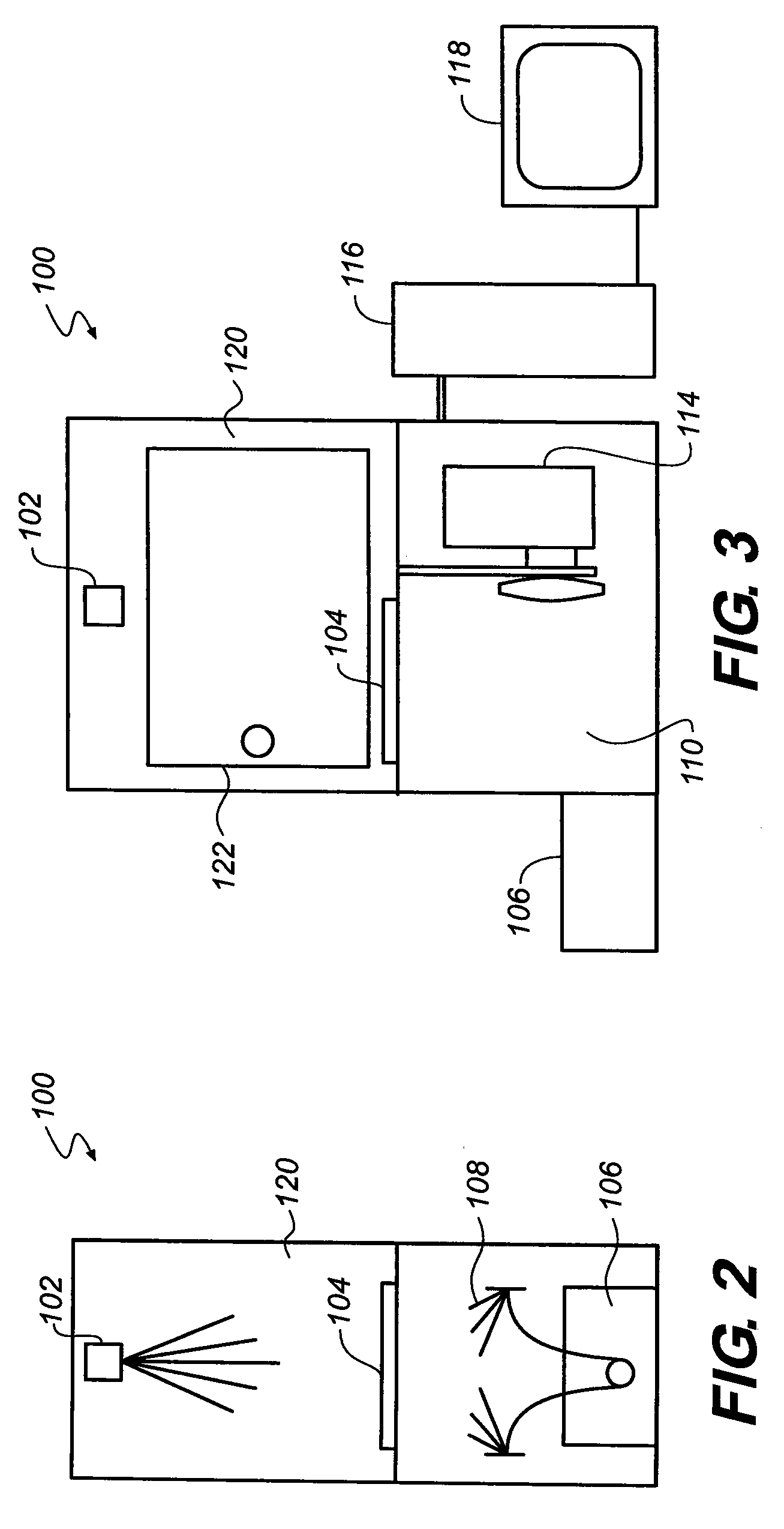Apparatus and method for external fluorescence imaging of internal regions of interest in a small animal using an endoscope for internal illumination
an endoscope and fluorescence imaging technology, applied in the field of apparatus and method for external fluorescence imaging of internal regions of interest in a small animal using an endoscope for internal illumination, can solve the problems of large fluoresced parts of the body of the subject, too deep near infrared imaging probes to be excited by illumination applied externally and non-invasively, and limited detection of the region of interes
- Summary
- Abstract
- Description
- Claims
- Application Information
AI Technical Summary
Benefits of technology
Problems solved by technology
Method used
Image
Examples
Embodiment Construction
[0031]The invention will be described in detail with particular reference to certain embodiments thereof, but it will be understood that variations and modifications can be effected within the spirit and scope of the invention. The following is a detailed description of various embodiments of the invention, reference being made to the drawings in which the same reference numerals identify the same elements of structure in each of the several figures.
[0032]The present inventors have recognized a need for a more efficient apparatus and method for exciting optical imaging probes internally located in regions of interest of a subject such as a small animal for the purpose of molecular imaging. This invention provides a method to enhance and maximize the depth of tissue penetration of light from an excitation source. As shown in the graphical representation of FIG. 1, endogenous chromophores like hemoglobin (oxy-hemoglobin) and melanin absorb light and interfere by autofluorescence below...
PUM
 Login to View More
Login to View More Abstract
Description
Claims
Application Information
 Login to View More
Login to View More - R&D
- Intellectual Property
- Life Sciences
- Materials
- Tech Scout
- Unparalleled Data Quality
- Higher Quality Content
- 60% Fewer Hallucinations
Browse by: Latest US Patents, China's latest patents, Technical Efficacy Thesaurus, Application Domain, Technology Topic, Popular Technical Reports.
© 2025 PatSnap. All rights reserved.Legal|Privacy policy|Modern Slavery Act Transparency Statement|Sitemap|About US| Contact US: help@patsnap.com



